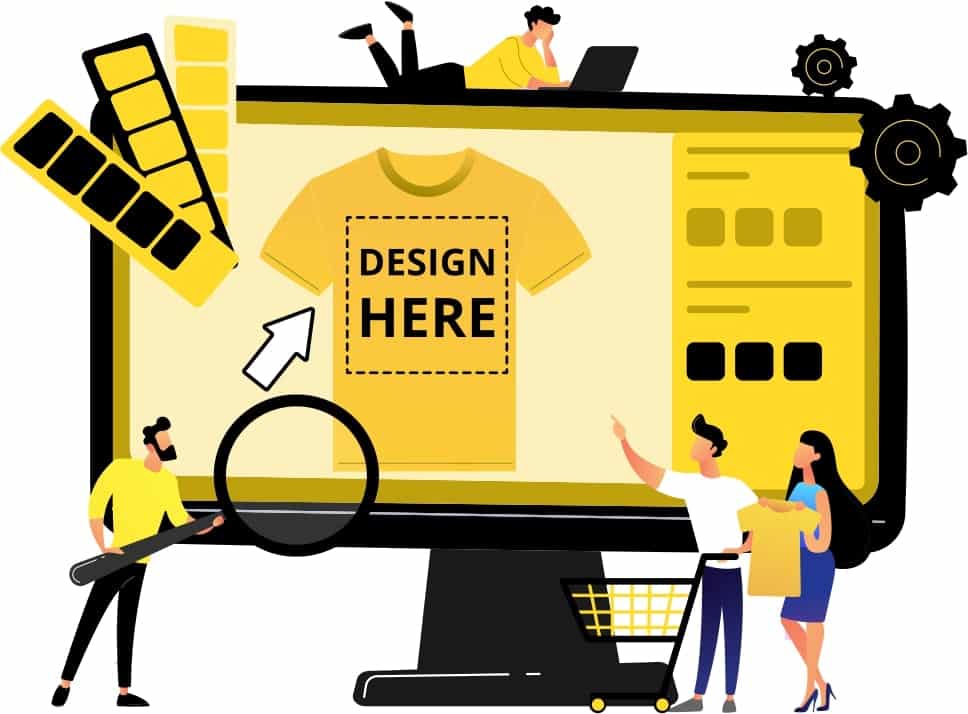
What is On-demand manufacturing-2021?
Manufacturing on Demand is a manufacturing model in which goods are only manufactured when they are needed. In the fashion industry, this is also known as order. In this case, brands will not send the required quantities to their manufacturers until the product has been ordered directly from their customers. This usually includes prepayment for the item. This often leads to longer waiting times for customers because the manufacturer has not yet made the product at the time of the order.
You have a period of time that you call your customers for orders and then list them when they come in. You then send these orders directly to your manufacturer, where they are made. For large and expensive items, it may be possible to order by product. You can then choose to send them directly from the factory or send them back to you where you can send them to customers as you see fit. This means that you are not really going to be wasted.
There’s a big difference between the on-demand model and traditional mass-production, which relies on the products designers expect customers to produce for a large seasonal order. A problem with this type of manufacturing is that there is often a lot of dead inventory and wasted products. With red production lines to adhere to seasonal quotas, it is also possible that mass production can affect product quality.
Manufacture on demand doesn’t require stocking of products waiting for customers to order. Then all goods are made on customer request. From a production point of view, orders have more time for delivery because they are not seasonal. This can mean that products can be manufactured to exact specifications or to a higher standard.
Manufacturing has had an even bigger impact on demand in recent years as designers seek to realign their business models and put ethics and economics high on their list of priorities.
The benefits of on-demand manufacturing
1. It offers designers a more ethical alternative in manufacturing
One of our major contributions to the role of on-demand production is that it is a more ethical choice. It reduces the energy and pollution of unsold and therefore used disposable inventory. It also means that as a designer, can have more control over design process as it is not exposed to the same pressures as wholesale designers due to seasonal deadlines. It also cuts down on fashion and reduces the risk of products being made in unregulated factories to save time. Given the demand for ethical fashion, this “slower” model may give brands faster opportunities to win.
2. Less waste in manufacturing
Less waste is one of the main advantages of the on-demand model. With on-demand production, brands only produce inventory that they have already sold. This saves too much product that would otherwise end up in landfill and the cost of making that material. This gives the designer a two-person price.
3. During manufacturing process better relationships with your producers
Our big goals since transitioning to the on-demand model has been to improve designer’s relationship with producers. This benefit is related to other ethical considerations of the on-demand model shown above. According to Designer’s, they had a closer relationship with manufacturers because they were able to offer them higher-cost orders at higher costs.
This means the factories don’t have to employ seasonal workers to make their products. This ensures more consistent options for producers, resulting in more ethical hiring practices and fewer economic worries about seasonal requirements.
4. Top quality products in manufacturing
The shorter lead time combined with a longer production schedule means that on-demand products are typically of better quality than their wholesale products. Production times can be communicated to customers in advance so that manufacturers and designers have time to ensure that their products are of the best quality possible.
5. More control over your business while manufacturing
One of the most important benefits of on-demand manufacturing is the control it gives the designer over its product. In the wholesale model, brands often respond to market demands and the need to move out of stock. However, if brands pursue manufacturing on demand, they can understand exactly which products are in high demand and ensure that the right amount of those products are produced.
This also helps brands stay in touch with common fashion changes so that they can encourage inventory to meet those demands quickly without waiting for seasonal inventory changes.
6. More opportunities for producers in manufacturing process
The on-demand model is not just for the benefit of designers. This also benefits producers who are less exposed to seasonal pressure from wholesale orders.
By ensuring on-demand production flows, manufacturers may have more time and effort to schedule themselves to manufacture products. This also ensures that more skilled workers are employed than seasonal workers, contributing to more ethical and sustainable business practices for all involved.
7. You can start your business right away
One of the hardest areas of the business is to start and get your designer feet off the floor. Manufacturing on demand provides a low-risk introduction to design because there is not enough start-up capital to submit wholesale inventory.
There is no obligation to wait for a manufacturer if their product is not manufactured in the desired quality. Finally, on-demand manufacturing is also made much easier with instant online ordering, which you can use to quickly and efficiently build a network of customers to get your business going.
Read more at studio.graphtick.com

0 comments